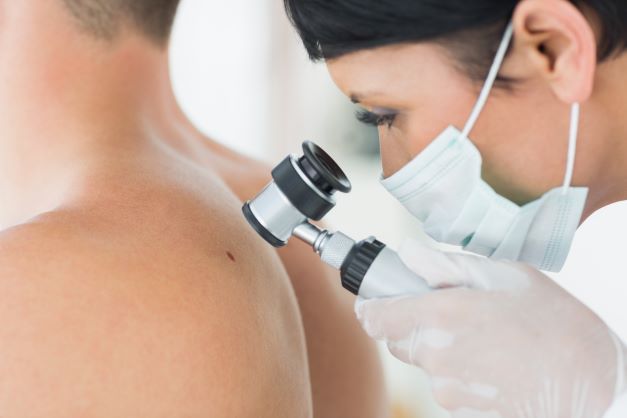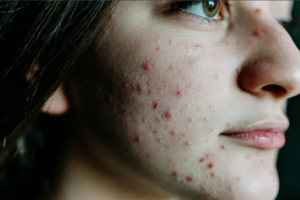Novel Approaches to Nonmelanoma Skin Cancer
New and emerging treatment options are advancing care for patients with NMSC.
Nonmelanoma skin cancer (NMSC) is an increasing global health care problem due to rising incidence1 caused by aging, more people living with organ transplants and requisite immunosuppression, the frequency of early childhood sunburns, and sporadic extreme recreational exposure to the sun. It is estimated that approximately 9,500 people in the United States are diagnosed with skin cancer every day,2 with the direct and indirect costs of NMSC management totaling billions of dollars annually.3 While NMSC is generally considered a curable disease, the condition is significantly associated with increased risk of another malignancy. What’s more, NMSCs can grow to become large, ulcerating, locally destructive tumors that may cause disfigurement, functional impairment, and significant pain.4
THE BOTTOM LINE
While NMSC is generally considered a curable disease, the condition is significantly associated with increased risk of another malignancy; tumors can become large, ulcerating, locally destructive, cause functional impairment, and produce significant pain. In the wake of COVID-19 thousands of skin cancer patients have postponed their treatments—or even their evaluations—due to concerns about entering a health care facility and having to be unmasked for a prolonged period during evaluations, biopsies, or surgical procedures. Novel topical and oral treatments, PDT, and investigational agents are expanding the options for management of NMSC.
NMSC, including basal cell carcinoma (BCC) and squamous cell carcinoma (SCC), are the two most common types of skin cancer. While melanoma often can be identified using the ABCDE method (asymmetry, border, color, diameter, and evolving), finding outlier pigmented lesions, or with dermatoscopic examination, NMSC is characterized most often by the absence of additional pigment, rendering the lesions close to the skin tone of the patient. For squamous cell carcinoma, the primary lesion often has an erythematous base and an overlying firm, scaling, tender papule or plaque. Basal cell carcinoma most typically is a slightly hypopigmented pearly macule, papule, or plaque, sometimes presenting subtly suggestive of a scar.
Because NMSC carries a low risk of metastasis, excisional surgery alone is currently the most common curative treatment. Wide-local excision has proven effective in treating small, low-risk tumors, while Mohs micrographic surgery is especially useful in treating large or histologically more aggressive tumors, and those on the head and neck.5 Surgical approaches to the management of NMSC are extremely effective and are usually well tolerated with acceptable cosmetic outcomes. Nevertheless, surgery is sometimes contraindicated due to the presence of significant comorbidity or high cosmetic expectations.6 And surgery is expensive. The average treatment cost of NMSC in the US from 2007 to 2011 was estimated to be $4.8 billion annually.7 For all of these reasons, it is clear there remains a need for an easy-to-administer, safe, low cost, and effective treatment for cutaneous malignancies that is non-surgical.
COVID’S IMPACT ON NMSC MANAGEMENT
COVID-19 continues to have a significant impact on our offices, hospitals, and health systems, including the practice of dermatology. Thousands of skin cancer patients have postponed their treatments—or even their evaluations—due to concerns about entering a healthcare facility and having to be unmasked for a prolonged period during evaluations, biopsies, or surgical procedures. Many patients with compromised immune systems, most of whom inherently carry a higher risk of NMSC, have determined that their risk of contracting COVID-19 by entering a healthcare facility outweighs the benefit of managing their skin cancer surgically. As a result, we are seeing circumstances where many patients who delayed evaluations, or treatment, or both, are ultimately being managed for NMSC tumors that are larger, and at times, more difficult to treat. In addition, we have many more patients than ever before that are living with an immunocompromised status. Not only do these patients carry a higher risk of developing NMSC, but also have a higher risk for poorer surgical outcomes (infection, poor wound healing), making it increasingly important that we seek to provide patients with additional safe and effective options for the treatment of NMSC.
A BRIEF HISTORY OF NMSC TREATMENT
Since the 16th century, cancers were treated with surgery as long as the tumor was localized.8 In the 1930s, Mohs revolutionized skin cancer surgery. Medical noninvasive treatment options became possible due to innovations in molecular biology in the 1960s. Topical cream-based therapies entered the market more than 30 years ago, and photodynamic therapy and lasers have also been added to the armamentarium for the treatment of actinic keratosis and cutaneous cancers (albeit off-label in the US). In 2012, Vismodegib, a capsule prescription medication, was approved for the treatment of metastasized or locally advanced basal cell carcinomas. The truth remains that there is no single treatment method that is ideal or appropriate for all tumors.9 Today, many patients prefer to avoid surgery if and whenever possible. Unfortunately, the alternatives of topical creams, oral therapies, or radiation for the treatment of NMSC similarly are oftentimes not desired.
Topical chemotherapy creams, topical immunomodulators, or intralesional chemotherapy such as 5-fluorouracil (5-FU) may be used to treat nonmelanoma skin cancer10 when patients are not candidates for standard approach.11 However, while adequate in some cases, these currently available topical or injectable treatments tend to be cumbersome and often have outcomes that are less than optimally effective due to irritation—if not damage—to the skin at the site of application, or have high recurrence rates.
On the other hand, oral smoothened (Smo) inhibitors,12 oral tyrosine kinase inhibitors, and non-steroidal anti-inflammatory agents (NSAIDs)13 are, at times, useful in high-risk NMSC patients with recurrent and aggressive disease who may not tolerate other systemic therapies.12 However, common side effects of these oral therapies can include muscle spasms, joint pain, hair loss, fatigue, problems with taste, poor appetite and weight loss, nausea and vomiting, itchy skin, diarrhea, and constipation.15
Radiation treatment for NMSC is another option. It is not preferable for all patients and is typically reserved for older adults, because exposure to radiation may lead to other skin cancers in younger people as they age or skin changes that make identification or treatment of recurrence or a second primary NMSC in the area more difficult. Radiation is costly, not always sufficiently effective, and comes with risks of ulceration and pain. It also carries the risk of irreversible structural damage to the skin in the form of scarring. Other common adverse effects reported include hypopigmentation, telangiectasias, erythema, and hyperpigmentation.16 What’s more, people with darker skin—including Asian, Hispanic, and Black patients who have Fitzpatrick skin types III or greater17—are naturally more susceptible to the negative cosmetic effects of radiation, and better treatment alternatives are needed.
NOVEL APPROACHES TO TREATING NMSC
NMSC treatments that have newly arisen over the past several years include systemic medications that treat more advanced or recalcitrant cancer. While we have long had systemic treatments available for these types of tumors, these newer agents work with a different mechanism of action that relies on immune checkpoint inhibition, utilizing the patient’s immune system to tackle tumor cells and offering potentially a better health outcome and a more tolerable safety profile. Furthermore, some patients who may be poor surgical candidates and who are unwilling or unable to use systemic medications are being successfully treated with newer more superficial radiation devices.
Dermatologists are becoming more comfortable with the use of photodynamic therapy (PDT), a two-stage NMSC treatment that uses topical solutions or gels, called photosensitizing agents, along with light, to kill cancer cells.18 As a result, off-label use of PDT is being utilized by some skin cancer specialists as a surgical alternative in smaller superficial tumors.
An ongoing need in NMSC assessment and management is the development of statistically-proven, safe and effective, less invasive options for both the diagnosis and treatment of these common malignancies. Some “low-hanging fruit” in this arena include, but are not limited to:
- New, less invasive, yet equally reliable diagnostic testing that may allow for the detection of skin cancer without having to surgically biopsy a lesion
- FDA approval for the use of PDT in the US (and how to optimally use PDT) for the treatment of superficial NMSCs
- Additional oral therapies that are more tolerable than that which is currently available
- The use of a targeted therapeutic intralesional injections that may permit for local tumor resolution with minimal toxicity to cutaneous structures.
In our Clinical Research Unit at Medical Dermatology Specialists-Phoenix, a U.S. Dermatology Partners practice, we are evaluating better ways to diagnose and treat NMSC, as well as to prognosticate which tumors may require or benefit from more aggressive management or enhanced post-treatment surveillance. As well, we are involved in clinical trials evaluating the use of red and blue light PDT for the treatment of both NMSC and actinic keratoses (AK), and for solid organ transplant recipients (a very high-risk group), we are conducting a trial investigating the capability of using these technologies for NMSC prevention.
Below is a summary of the current clinical trials for non-invasive detection, non-surgical treatment, and prognostic assessment of NMSCs:
- Adhesive patch (“biopsy”) acquisition of tissue RNA for the detection of NMSC
- Observational follow-up in cutaneous SCC, validating a gene expression assay to predict the risk of SCC recurrence
- Red light + Ameluz (PDT) in the treatment of superficial BCC
- Blue light + Levulan (PDT) + neoadjuvant Vitamin D for multiple BCCs
- Cyclic PDT for the prevention of skin cancer in solid organ transplant recipients
- Novel red light PDT device + Ameluz (PDT) for treatment of multiple AKs
Specific populations of focus for our PDT trials include those with multiple BCCs, with or without underlying genetic syndromes such as Gorlin syndrome, and those that have undergone solid organ transplantation. Gorlin syndrome, also known as nevoid basal cell carcinoma syndrome, is a rare, inherited organ and tissue disorder that affects an estimated one in 31,000 people. Patients with this disorder have a very high risk of developing BCC during adolescence or early adulthood. While more than one million new cases of BCC are diagnosed each year in the US, fewer than one percent of these skin cancers are related to Gorlin’s.20 The organ transplant recipient population is another population of specific interest, that could benefit greatly from non-surgical options, as they have a particularly high rate of new NMSC tumor growth,21 which otherwise demands multiple surgical interventions. Those with highest risk are heart, lung, and kidney recipients. In addition to often developing multiple tumors over many years, this population also has a higher risk of both poor wound healing, and infection, secondary to their anti-rejection immunosuppressive regimen. We are using PDT plus oral neoadjuvant Vitamin D in this population to assess the ability to reduce tumor development. Patients in this clinical trial receive three PDT treatments, at two-month intervals over a six-month period. The first two treatments are randomized, with patients in Group A receiving Vitamin D pills prior to the first treatment, and placebo pills prior to the second treatment. The order is reversed in Group B. Total amounts of vitamin D supplementation is adjusted based upon serum 25-hydroxy-D3 levels found at baseline.
We have received very positive feedback from our PDT trials. Patients’ NMSCs have been very responsive to interventional treatment both clinically and cosmetically. Patients that have opted into the PDT trials, in general, prefer the PDT treatment over surgery due to the lack of scar after treatment is complete. Anecdotally, patients say they would pick PDT over surgery, even with the longer duration of treatment and additional visits necessary with PDT treatment.
The challenges faced by providers trying new approaches to the treatment of cancer is the lack of relative certainty that something will be both safe and effective. Therefore, data matters. We are trying to provide real-world clinical evidence to support our peers in considering new treatment options, when appropriate, with confidence.
NEW AND NOVEL OPTIONS NEEDED
The triple threat we all want to offer our patients with skin cancer is ultimately a safe and effective, easy to access and easy to tolerate, cost-conscientious therapy. As Mohs surgery has become more and more accessible to patients over the past few decades, this choice, when appropriate, is an obvious one for most. Standard surgical excisions, with a dermatologist that has cared for the patient over time, also offers the benefit of trust during a time of apprehension. Nonetheless, as we strive to sufficiently meet all needs, and move beyond the current treatment armamentarium, there is also the possibility of many new and novel options.
-
Fahradyan A, Howell AC, Wolfswinkel EM, et al. Updates on the Management of Non-Melanoma Skin Cancer (NMSC). Healthcare (Basel). 2017 Nov 1;5(4):82.
-
https://www.aad.org/media/stats-skin-cancer#:~:text=It%20is%20estimated%20that%20approximately,with%20skin%20cancer%20every%20day.&text=Research%20estimates%20that%20nonmelanoma%20skin,3%20million%20Americans%20a%20year
-
Amini S, Viera MH, Valins W, Berman B. Nonsurgical innovations in the treatment of nonmelanoma skin cancer. J Clin Aesthet Dermatol. 2010;3(6):20-34.
-
https://www.jaad.org/article/S0190-9622(19)32058-4/fulltext
-
https://skinofcolorsociety.org/patient-dermatology-education/nonmelanoma-skin-cancer-nmsc/#:~:text=Excisional%20surgery%20remains%20the%20most,certain%20areas%20of%20the%20face.
-
Ariza S, Espinosa S, Naranjo M. Nonsurgical Therapies for Basal Cell Carcinoma: A Review. Actas Dermosifiliogr. 2017 Nov;108(9):809-817.
-
https://www.clevelandclinicmeded.com/medicalpubs/diseasemanagement/dermatology/nonmelanoma-skin-cancer/
-
https://www.jaad.org/article/S0190-9622(15)00240-6/pdf
-
https://www.clevelandclinicmeded.com/medicalpubs/diseasemanagement/dermatology/nonmelanoma-skin-cancer/
-
Chitwood K, Etzkorn J, Cohen G. Topical and intralesional treatment of nonmelanoma skin cancer: efficacy and cost comparisons. Dermatol Surg. 2013 Sep;39(9):1306-16.
-
Rudnick EW, Thareja S, Cherpelis B. Oral therapy for nonmelanoma skin cancer in patients with advanced disease and large tumor burden: a review of the literature with focus on a new generation of targeted therapies. Int J Dermatol. 2016 Mar;55(3):249-58
-
https://www.hmpgloballearningnetwork.com/site/thederm/site/cathlab/event/chemoprevention-non-melanoma-skin-canceran-update
-
https://www.cancer.org/cancer/basal-and-squamous-cell-skin-cancer/treating/targeted-therapy.html
-
McGregor S, Minni J, Herold D. Superficial Radiation Therapy for the Treatment of Nonmelanoma Skin Cancers. J Clin Aesthet Dermatol. 2015;8(12):12-14.
-
https://www.ncbi.nlm.nih.gov/books/NBK557626/
-
https://www.mayoclinic.org/tests-procedures/photodynamic-therapy/about/pac-20385027
-
https://medlineplus.gov/genetics/condition/gorlin-syndrome/#frequency
-
https://www.mayoclinic.org/tests-procedures/photodynamic-therapy/about/pac-20385027
-
https://www.cancer.org/cancer/basal-and-squamous-cell-skin-cancer/treating/other-than-surgery.html
-
https://medlineplus.gov/genetics/condition/gorlin-syndrome/#frequency
-
Gupta AK, Bharadwaj M, Mehrotra R. Skin Cancer Concerns in People of Color: Risk Factors and Prevention. Asian Pac J Cancer Prev. 2016;17(12):5257-5264. Published 2016 Dec 1.








